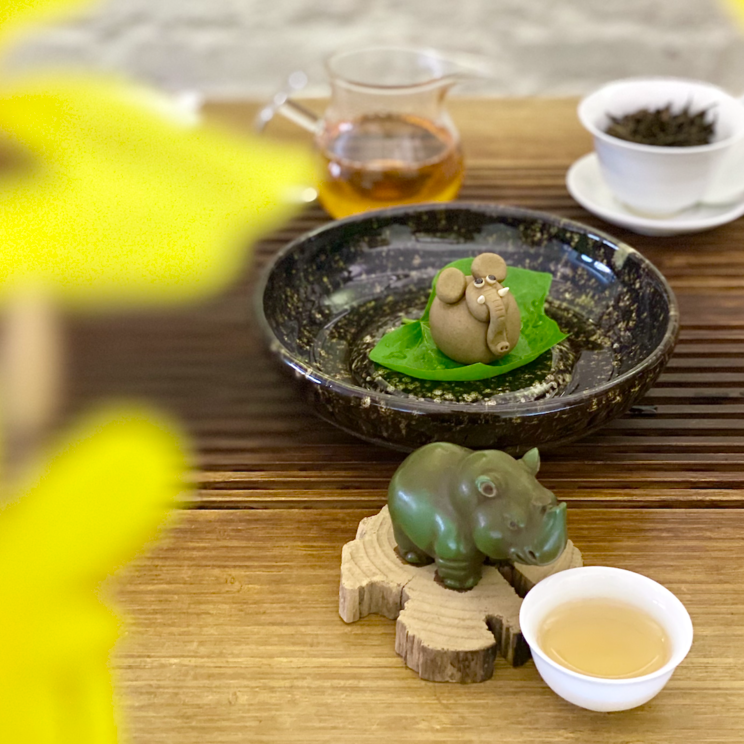If you’ve visited us at our old East Village teahouse you may have met some of our pets. Not living pets, but tea pets! When people join us for tea, most want to know more about these tiny adorable clay creatures. We wanted to give you more information about the significance of this part of our service. You can read a children’s story here about a tea pet, written by our friend and poet, Michael Alpiner.
A tea pet is a drinking buddy, usually made out of a clay (ideally purple clay) that can develop a patina from both the oils in tea and the action of pouring tea on to it. The repeated rubbing and friction on the tea pet helps build the patina, almost like a long-term polish. At surface level, they just seem like cute little creatures to join you for tea, but in reality they have quite a lot of depth. They are not spiritual in nature, nor do they bring good luck - these are two misconceptions around the purpose of tea pets.
In Chinese culture, certain things are deemed to have a soul, while other things do not. An easy example is with jade and gold. Jade is believed to have a soul, but gold does not. There’s a common saying that gold has a price, but jade is priceless. This is why you often see jade appreciated and valued over gold in Chinese culture.
Tea is given a high value because we believe that tea has a soul too. Purple clay has the potential to gain a soul, so by repeatedly nourishing the purple clay tea pet with tea, we are assisting it in a process of gaining a soul.

The process of giving the tea pet a soul through sharing our tea with it goes along with the pursuit of building intrinsic value and sentiment towards objects. This is a very deep and significant aspect of Chinese culture. In the instance of a tea pet’s patina, the sentimental value cannot be replicated quickly or faked; it takes time and repeated effort. These kinds of objects are valued much higher than objects that are flashy and extravagant from their creation. Like a tea pet that’s shiny, well-polished, and bright porcelain is seen as cheaper with less intrinsic value. The “dull” looking objects, such as: purple clay; jade; blue and white porcelain; calligraphy; etc, can withstand the test of time and grow more valuable with age and demand effort.
With this in mind, we see the objects as able to “communicate” with us - they tell a story and become part of our memory which holds strong sentimental value. It’s like through the repeated action of “working” something, a piece of us, or our soul, is instilled into the object. It’s an exchange, just like a communication or memory built with another human or life. A well seasoned purple clay teapot can easily resell for 10x the price it was bought for. Tea pets hold this same sentimental value, but usually are not brought to the market for resale.
When you visit our tea house, you are able to choose a tea pet to join you for tea. We have many different figurines from many friends of the tea house that hold strong sentimental value and beautiful souls. We would love to introduce you to our tea pets soon! Reservations are always recommended for your visit.


1 comment
What a beautiful explanation! Being a Buddhist, I can definitely see how such a simple act of pouring tea over a tea pet can be so much more than it appears. It is true that in the US that we do not appreciate things as much as we should for their sentimental value and for their longevity. I think that is sad. My little tea pet will now be a reminder.